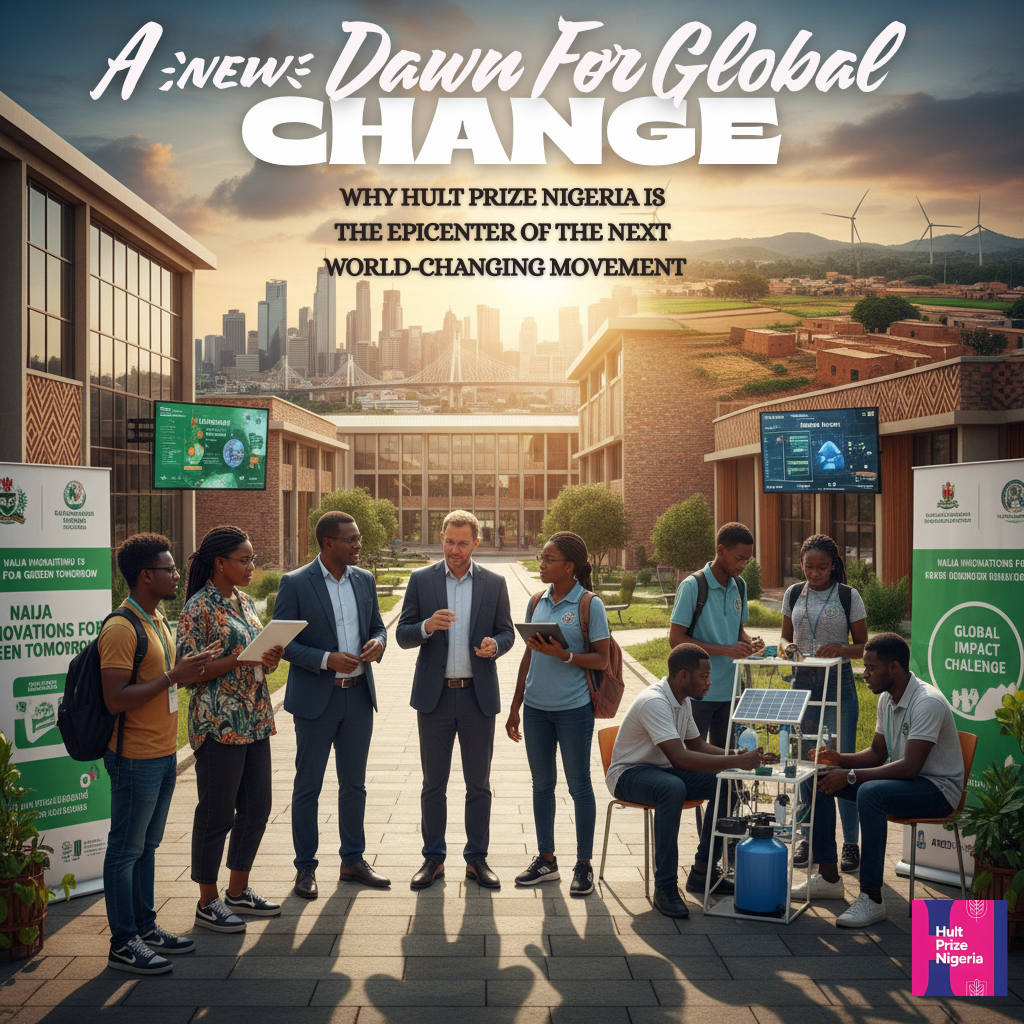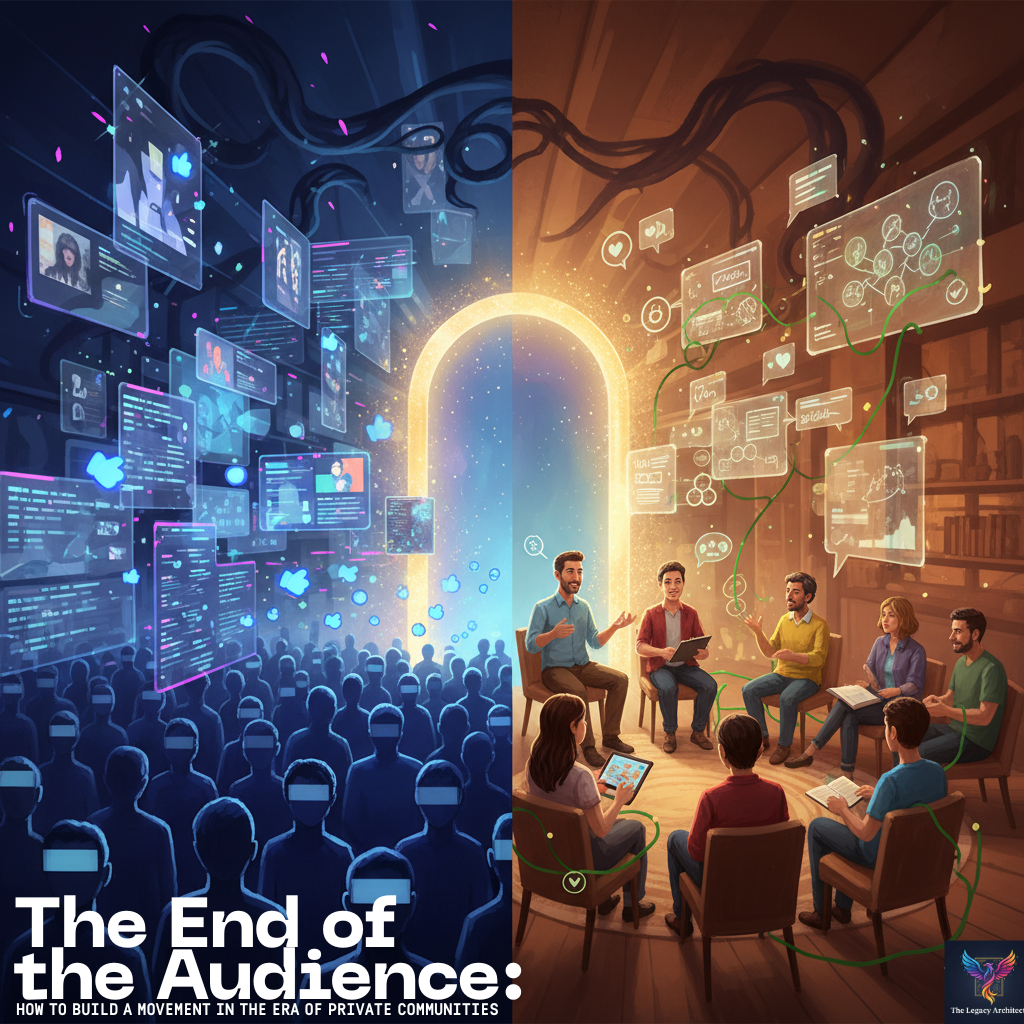Abstract
This study investigates the effectiveness of the MegaMinds AI Learning Companions in enhancing numeracy proficiency among 9th-grade students at St. Anthony School of Higher Education, a K-12 institution serving a predominantly low-socioeconomic student population. Utilizing a mixed-methods approach and a project-based learning framework, we analyzed student mathematics performance data from both 8th and 9th grades. Results demonstrate statistically significant gains and substantial positive growth in 9th-grade mathematics proficiency following the implementation of the MegaMinds AI Learning Companions. The interdisciplinary nature of the MegaMinds AI Learning Companions appears to significantly boost student engagement, problem-solving, and critical thinking skills. This case study highlights the potential of integrating AI personal assistants to address foundational academic skills and offers valuable implications for educators serving diverse student populations.
Keywords: Artificial Intelligence (AI), Learning Companion, personal assistant, mathematics proficiency, interdisciplinary learning, project-based learning, low-socioeconomic students, student engagement, academic growth.
This Case Study endeavors to evaluate the efficacy of the MegaMinds AI Learning Companions in cultivating mathematical proficiency among students at St. Anthony School of Higher Education. Utilizing a mixed-methods approach, integrating quantitative analysis of student performance data across the 8 and 9 grade spectrum with qualitative data derived from students and educator interview, the study examines the impact of the AI assistant's implementation. Specifically, Grade 9 students utilized the MegaMinds AI Learning Companions for a period of 10 weeks, while Grade 8 served as the control group, receiving standard mathematics instruction. Findings reveal statistically significant improvements in mathematics achievement for the students who utilized the MegaMinds AI Learning Companions compared to the control group. Key contributing factors identified include heightened student engagement, the cultivation of robust problem-solving competencies, and the development of advanced critical thinking capacities potentially facilitated by the AI Learning Companions. Moreover, the investigation delineates specific areas warranting further pedagogical consideration and proposes evidence-based recommendations aimed at optimizing the MegaMinds AI Learning Companions’ influence on mathematical learning outcomes.
School Demographics
Student literacy and numeracy are foundational pillars of academic success, serving as essential building blocks for future learning, career opportunities, and active participation in society. The ability to read with comprehension, write effectively, and reason mathematically is paramount for navigating the complexities of the 21st century. However, the development of these core skills is not uniform across all student populations. Students from low-socioeconomic backgrounds often face additional barriers to educational attainment, including limited access to resources, inadequate support systems, and the potential impact of environmental factors on cognitive development. Research consistently demonstrates the correlation between socioeconomic status and academic achievement, highlighting the urgent need for effective educational interventions and approaches that address these disparities. These students may enter school with less exposure to vocabulary, print-rich environments, and early numeracy experiences, creating an achievement gap that can widen over time if not proactively addressed.
At St. Anthony School of Higher Education, a K-12 private institution serving a predominantly low-socioeconomic student population, the school recognizes the unique challenges and opportunities presented by its student body. The institution's commitment to providing high-quality education and fostering equitable outcomes has driven a search for innovative and effective pedagogical approaches. This dedication to student success led to the adoption of the Entrepreneurship Studies, Science, Technology, Research, Engineering, Arts, and Mathematics (ESTREAM) curriculum. ESTREAM represents a departure from traditional, siloed subject instruction, embracing a more integrated and applied learning philosophy. This curriculum is designed to not only impart content knowledge but also to cultivate essential 21st-century skills such as critical thinking, problem-solving, collaboration, and creativity.
Research Driven
The pronounced educational gap in mathematics among middle school students presents a critical challenge within contemporary education, amplified significantly by the disruptions caused by the COVID-19 pandemic. The widespread observation of students struggling with fundamental mathematical concepts, leading to performance substantially below expected grade levels, underscores the urgent need for targeted and innovative interventions. The 2022 National Assessment of Educational Progress (NAEP) revealed alarming trends, particularly within middle school, with the largest score declines in mathematics since 1990; notably, 38% of eighth-grade students performed below the NAEP Basic level (National Center for Education Statistics [NCES], 2022). These deficiencies have profound implications, impacting students’ immediate academic success and potentially limiting their future opportunities in STEM-related fields, where mathematical literacy is increasingly essential (Organization for Economic Co-operation and Development [OECD], 2019). The shift to remote learning during the pandemic exacerbated existing inequities, disproportionately affecting Black, Latino, and low-income students, creating significant learning loss and widening achievement gaps (EdTrust, 2023).
By leveraging advanced algorithms, 3D environments and natural language processing, MegaMinds provides individualized instruction, adaptive practice problems, and real-time feedback, effectively mitigating the learning loss experienced during the pandemic. The AI-driven approach enables students to progress at their own pace, reinforcing foundational concepts and building confidence in their mathematical abilities. Moreover, MegaMinds fosters active engagement through interactive exercises and personalized learning pathways, addressing the diverse learning styles and needs of middle school students, and aiming to close the pandemic-induced educational gap.
A study by Koenka et al. (2021) highlighted the persistent challenges of one-size-fits-all instruction, particularly in complex domains like mathematics, where students exhibit varying levels of prior knowledge and cognitive styles. Furthermore, findings from the 2022 National Assessment of Educational Progress (NAEP) underscore the widening achievement gaps, indicating that traditional methods may be insufficient in addressing the needs of at-risk and underperforming students (National Center for Education Statistics [NCES], 2022). Specifically, the NAEP data reveals significant disparities in mathematics proficiency across demographic groups, suggesting a need for more equitable and responsive instructional strategies. Moreover, research by Roschelle et al. (2020) emphasizes the importance of incorporating conceptual understanding and problem-solving skills, rather than relying solely on procedural fluency, which traditional approaches often prioritize. Consequently, there is a pressing need for adaptive and personalized learning solutions that can effectively engage students, cultivate deeper mathematical understanding, and address individual learning trajectories.
In response to these challenges, this study proposes the implementation of the MegaMinds AI Learning Companion, a personalized, interactive tutoring tool designed to address the specific needs of middle school students. This case study addresses this need by exploring the implementation of the MegaMinds AI Learning Companion as an interactive tutoring tool, designed to provide tailored support and enhance mathematical skill development in middle school students. By leveraging artificial intelligence to deliver personalized instruction, immediate feedback, and adaptive learning pathways, this investigation seeks to determine the efficacy of AI-driven interventions in closing the mathematics achievement gap and promoting equitable access to high-quality mathematics education.
Introduction
The cultivation of mathematical proficiency is a foundational objective within educational institutions globally, particularly in environments serving diverse student populations. At St. Anthony School of Higher Education, a K-12 institution characterized by a predominantly low-socioeconomic student demographic, addressing disparities in academic achievement is paramount. This study endeavors to rigorously evaluate the efficacy of integrating the MegaMinds AI Learning Companions as an innovative pedagogical tool designed to enhance mathematical literacy. This initiative stems from a broader commitment to leveraging technological advancements to bridge learning gaps and further robust academic growth.
To comprehensively assess its impact, this investigation employed a mixed-methods approach. This involved the systematic integration of quantitative analysis, meticulously examining student performance data across the 8th and 9th-grade spectrum, alongside qualitative insights garnered from in-depth interviews with both students and educators. Specifically, a quasi-experimental design was implemented, wherein Grade 9 students utilized the MegaMinds AI Learning Companions over a 10-week period, while Grade 8 served as a control group, receiving standard mathematics instruction. Preliminary findings reveal statistically significant improvements in mathematics achievement for the intervention group. Beyond quantitative gains, key contributing factors identified include heightened student engagement, the cultivation of strong problem-solving competencies, and the discernible development of advanced critical thinking capacities, all potentially facilitated by the interactive nature of the MegaMinds AI Learning Companion. Furthermore, this investigation delineates specific areas warranting further pedagogical consideration and proposes evidence-based recommendations aimed at optimizing the MegaMinds AI Learning Companions’ influence on mathematical learning outcomes, thereby contributing to the broader discourse on technology-enhanced learning in underserved communities.
Data Overview
A focused investigation was conducted at St. Anthony's School of Higher Education to evaluate the impact of the MegaMinds AI Learning Companions on mathematical proficiency. The study involved a cohort of 15 students, with 9 students in Grade 8 serving as the control group receiving standard mathematics instruction and 6 students in Grade 9 utilizing the MegaMinds AI Learning Companions for a period of 10 weeks. Student mathematical understanding was assessed across four key domains: Number and Operations, Algebra and Algebraic Thinking, Measurement and Data, and Geometry. Data was collected at two diagnostic periods: a baseline assessment administered at the beginning of the study and an end-of-year (EOY) assessment to measure any changes in proficiency following the intervention period.
The comparative analysis of the baseline and end-of-year assessment data aims to elucidate the potential benefits of integrating the MegaMinds AI Learning Companions into mathematics instruction. By examining the growth in mathematical understanding across the specified domains for both the intervention group (Grade 9) and the control group (Grade 8), this study seeks to determine the efficacy of the AI assistant in enhancing student learning outcomes in mathematics. The findings will provide valuable insights into the potential of AI-powered tools to support and augment traditional mathematics instruction, informing future pedagogical decisions and resource allocation within the school.
Students Assessed:
15 students total (9 in Grade 8, 6 in Grade 9)
Diagnostic Periods:
Baseline vs. End of Year (EOY)
Assessment Domains:
Number and Operations, Algebra and Algebraic Thinking, Measurement and Data, Geometry
Summary of Overall Growth
The analysis of overall growth in mathematics placement categories for Grades 8 and 9 at St. Anthony's School of Higher Education reveals distinguished differences following a 10-week implementation of the MegaMinds AI Learning Companions for Grade 9 students, with Grade 8 serving as the control group. A significant finding is the increase in students performing at or above grade level, which rose by +7 overall. The end-of-year data shows 7 students (22% of Grade 8 and 67% of Grade 9) in this highest placement category, a substantial shift from the baseline of zero. This suggests a positive correlation between the use of the MegaMinds AI Learning Companions and the attainment of grade-level proficiency in mathematics.
Further examination of the placement categories indicates varied growth patterns. While the "Early On Grade Level" category remained stable with 2 students (11% of Grade 8 and 0% of Grade 9) at both baseline and EOY, the "Three+ Grade Levels Below" category experienced an overall decrease of 4 students. At the end of the year, Grade 8 had 44% of its students in this lowest performance band, while Grade 9 fared better with only 33%. These differing proportions in the lowest tier suggest a complex interplay of factors influencing student progress, particularly noting the overall reduction in students within this category. This seemingly contradictory trend warrants further investigation to understand the nuances of how the AI assistant impacted students with the most significant learning gaps. Additionally, the "One Grade Level Below" category saw a net decrease of -1 student, and the "Two Grade Levels Below" category experienced a net increase of +1 student. These shifts suggest a complex interplay of factors influencing student progress, with the MegaMinds AI Learning Companions potentially contributing to the upward movement of some students while others may require more targeted interventions.
Table 1: Summary of Overall Growth
| Placement Category | Baseline Total | End-of-Year (EOY) Total | Growth (EOY-Baseline) |
|---|---|---|---|
| Mid or Above Grade Level | 0 | 7 (22% +67%) | +7 |
| Early On Grade Level | 2 (11% + 0%) | 2 (11% + 0%) | 0 |
| One Grade Level Below | 1 (0% + 17%) | 1 (0% + 0%) | 0 |
| Two Grade Levels Below | 1 (11% + 0%) | 2 (11% + 0%) | +1 |
| Three + Grade Levels Below | 7 (44% + 33%) | 3 (78% + 83%) | -4 |
Note. Percentages indicate portion of students in each placement category for Grades 8 and 9 respectively.
The initial data suggests a promising impact of the MegaMinds AI Learning Companions on elevating students to or above grade-level performance in mathematics, particularly within the intervention group (Grade 9). However, the divergent trends observed in the lower proficiency categories necessitate a more granular analysis to fully understand the AI assistant's effectiveness across the spectrum of student learning needs. Further research should explore the specific features of the MegaMinds AI Learning Companions that contributed to the observed gains and investigate strategies to mitigate the challenges faced by students who continued to struggle despite its implementation.
The overall growth in mathematics placement for Grades 8 and 9 reveals a noteworthy trend in student proficiency following the intervention period where Grade 9 utilized the MegaMinds AI Learning Companions. The most prominent feature of the graph is the substantial positive shift indicated by the green bar for the "Mid or Above Grade Level" category, signifying a net increase in students achieving grade-level proficiency. Conversely, the red bar for the "Three+ Grade Levels Below" category dramatically illustrates a significant reduction, representing a crucial positive outcome: a substantial decrease in the number of students occupying the lowest performance tier. This visual summary underscores a promising pattern of overall improvement in mathematical placement, suggesting that interventions, particularly the use of the MegaMinds AI Learning Companions in Grade 9, may have contributed to elevating students towards higher levels of mathematical understanding and proficiency.
Figure 1: Summary of Math Overall Growth in Grades 8 and 9
Green bars indicate positive growth (more students moved into that category). Red bars indicate negative growth (fewer students remained in that category). This clearly shows significant gains in the "Mid or Above Grade Level" category and reductions in the lowest tier ("Three+ Grade Levels Below").
Math Placement Distribution Analysis (Grades 8 & 9)
The comparative analysis of mathematics placement distribution between Grade 8 (control) and Grade 9 (MegaMinds AI Learning Companions intervention) reveals distinct patterns in student proficiency across the five placement categories. As visually represented, the percentage of Grade 9 students performing at the "Mid or Above Grade Level" significantly exceeds that of Grade 8, suggesting a positive correlation between the AI assistant's use and the attainment of grade-level mathematical proficiency within the intervention group. Conversely, the percentage of Grade 8 students in the "Three+ Grade Levels Below" category is notably higher than that of Grade 9, indicating a potential benefit of the AI intervention in mitigating significant learning gaps for students in the treatment group.
Further examination of the distribution highlights subtle differences in the intermediate placement categories. The "Early On Grade Level" percentages are similar for both grades, suggesting that the AI intervention may not have had a substantial impact on students nearing grade-level proficiency at the beginning of the study period. The "One Grade Level Below" and "Two Grade Levels Below" categories also present nuanced variations between the two grades, warranting further investigation to understand the specific ways in which the AI assistant may have influenced student movement within these performance bands.
In conclusion, the percentage distribution of students across the mathematics placement categories for Grades 8 and 9 provides a compelling visual representation of the potential impact of the MegaMinds AI Learning Companions. The clear disparity in the "Mid or Above Grade Level" and "Three+ Grade Levels Below" categories suggests a positive influence of the AI tool on overall mathematical proficiency and the reduction of significant learning deficits within the intervention group. These findings underscore the need for continued research to further elucidate the specific mechanisms through which AI-powered learning tools can enhance mathematics education and address the diverse learning needs of students.
Figure 2: Math Placement Distribution in Grades 8 and 9 (EOY %)
This chart shows the End-of-Year (EOY) math placement percentage distribution for Grades 8 and 9 across five placement categories. It highlights the differences in proficiency between the control group (Grade 8) and the intervention group (Grade 9).
Placement Category Comparison (Grades 8 & 9 EOY)
The comparative analysis of mathematics placement data for Grade 8 (control) and Grade 9 (MegaMinds AI Learning Companions intervention) at the end of the academic year reveals distinct performance profiles and suggests a notable impact of the AI assistant. A significant strength is evident in Grade 9, where a substantial 67% of students are performing at or above grade level, contrasting sharply with Grade 8's 22%. This considerable disparity underscores a substantial gap in grade-level mastery between the two groups, potentially attributable to the supplemental support provided by the MegaMinds AI Learning Companion. While 11% of Grade 8 students are categorized as "Early On Grade Level," indicating they are nearing full proficiency, no Grade 9 students fall into this category, suggesting the intervention group has either surpassed this stage or remains further behind.
Examining the below-grade-level categories further illuminates the differences between the two groups. Notably, 17% of Grade 9 students are one grade level below, indicating a need for targeted support to achieve full grade-level proficiency. In contrast, Grade 8 has no students in this category, which may reflect a polarization of performance with students either closer to grade level ("Early On") or significantly further behind. The "Two Grade Levels Below" category shows 11% of Grade 8 students, double the percentage of Grade 9 (0%), suggesting a specific cohort in the control group requiring focused intervention. Critically, the largest single category for Grade 8 is "Three or More Grade Levels Below," encompassing 44% of the students and signifying a critical need for intensive support. Grade 9 demonstrates a better outcome in this lowest performance band, with 33% of students, indicating a potential positive influence of the MegaMinds AI Learning Companions in mitigating the number of students with significant learning deficits. The observed reduction in students performing at the lowest levels in Grade 9 is crucial for improving the overall grade-level proficiency and highlights a potential benefit of integrating AI-powered tools in mathematics education.
In conclusion, the end-of-year mathematics placement data suggests a promising impact of the MegaMinds AI Learning Companions on Grade 9 students, particularly in increasing the percentage of students performing at or above grade level and reducing the proportion of students with the most significant learning gaps. While some students in both grades require additional support to reach full proficiency, the clear divergence in the "Mid or Above Grade Level" and "Three or More Grade Levels Below" categories warrants further investigation into the specific features of the AI assistant that contributed to these outcomes and how such tools can be strategically implemented to address the diverse learning needs of all students.
Figure 3: Comparative Math Placement Categories (Grades 8 & 9 EOY %)
This graph visually highlights Grade 9’s stronger performance in the "Mid or Above Grade Level" category and Grade 8's higher percentage in the "Three+ Grade Levels Below" category. It underscores the differences in placement patterns between the two grades across all categories at the End-of-Year (EOY) based on percentages of students within each grade.
Grade Level Highlights (EOY)
An analysis of student performance reveals a notable disparity in grade-level proficiency between 8th and 9th graders at End-of-Year (EOY). While Grade 9 shows significant strength with 67% of students at or above grade level, Grade 8 lags considerably, with only 22% reaching this benchmark. A substantial 44% of 8th graders are three or more grade levels below, highlighting a critical need for intensive intervention in this cohort, though Grade 9 improves slightly with 33% in this lowest band. Conversely, a small subset of 8th graders (11%) are on the cusp of proficiency, classified as "early on grade level," a category not present in Grade 9. These findings underscore a clear progression challenge between the two grades, particularly concerning foundational mastery for a significant portion of 8th-grade students.
Mid or Above Grade Level
Grade 9 shows a significant strength with 67% of students performing at or above grade level by the end of the year.
Grade 8 lags behind with only 22% of students reaching this level.
This highlights a substantial gap in grade-level mastery between the two grades.
Early On Grade Level
Grade 8 has 11% of students in this category, while Grade 9 has none.
This suggests that a small subset of Grade 8 students are on the cusp of full grade-level proficiency.
Grade 9 students have either progressed beyond this stage or remain further behind.
One Grade Level Below
In Grade 9, 17% of students are one grade level below, indicating some students are close to grade level but require additional support.
Grade 8 has no students in this category, which may reflect a concentration of students either much further behind or closer to grade level.
Two Grade Levels Below
Grade 8 has 11% of students two levels below, double the percentage in Grade 9, which has no students in this category.
This suggests Grade 8 has a small group of students needing targeted intervention to catch up.
Three or More Grade Levels Below
This is the largest category for Grade 8, with 44% of students significantly below grade level, indicating a critical need for intensive support.
Grade 9 fares better, with only 33% of students in this lowest performance band.
The reduction in students at this level is essential to improve overall grade proficiency.
Key Observations
The end-of-year mathematics placement data for Grade 8 (control) and Grade 9 (MegaMinds AI Learning Companions intervention) at St. Anthony's School of Higher Education reveals a significant disparity in academic performance, particularly at the higher proficiency levels. A striking observation is the strong mathematical performance of Grade 9 students, with over two-thirds demonstrating proficiency at or above grade level. This contrasts sharply with Grade 8, where a substantial portion of the student population is performing significantly below expectations. The data underscores a critical need for focused intervention within Grade 8, especially considering the large cohort of students who are three or more grade levels below, requiring intensive and targeted support to address fundamental learning gaps.
Moving forward, strategic efforts should prioritize distinct yet complementary approaches for both grade levels. For Grade 8, the implementation of accelerated learning programs designed to address foundational deficits and promote rapid progress is paramount. These programs should be tailored to the specific needs of students performing significantly below grade level, aiming to bridge the substantial learning gaps identified in the data. Simultaneously, for Grade 9, the focus should be on sustaining and reinforcing the positive growth momentum observed during the intervention period with the MegaMinds AI Learning Companions. This may involve continued strategic integration of the AI tool alongside targeted support for students who are near grade level, with the goal of pushing them into full mathematical proficiency.
In conclusion, the comparative analysis highlights both the potential benefits of incorporating AI-powered learning tools like the MegaMinds AI Learning Companion, as evidenced by the strong performance of Grade 9, and the urgent need for targeted interventions and accelerated learning strategies for Grade 8. By addressing the specific needs of each grade level, St. Anthony's School of Higher Education can work towards ensuring more equitable and robust mathematical outcomes for all students. The successful strategies employed with the MegaMinds AI Learning Companions in Grade 9 warrant further investigation and consideration for broader implementation, while the challenges identified in Grade 8 necessitate a comprehensive and targeted intervention plan.
End-of-Year Assessment Summary
The mathematics assessment data from St. Anthony's School of Higher Education reveals a significant improvement in grade-level performance for both Grade 8 (control) and Grade 9 (MegaMinds AI Learning Companions intervention), with a particularly pronounced positive shift observed in Grade 9. Notably, the overall number of students in the "Three+ Grade Levels Below" category decreased by four, indicating progress in addressing the most significant learning deficits in mathematics across both grades. However, the distribution of this growth is uneven, with the majority of the advancement concentrated within the intervention group.
Grade 9 demonstrated a remarkable leap in grade-level performance, transitioning from a baseline of no students performing on or above grade level to a point where approximately two-thirds of the class achieved this benchmark by the end of the 10-week intervention period utilizing the MegaMinds AI Learning Companions. This substantial growth strongly suggests a positive correlation between the use of the AI-powered tool and accelerated mathematical proficiency. In contrast, while Grade 8 exhibited steady progress throughout the academic year, almost half of the students in the control group remain significantly below grade level. This persistent challenge underscores the need for targeted and potentially more intensive interventions to address the foundational learning gaps within this cohort.
The stark contrast in grade-level attainment between the two grades highlights the potential of the MegaMinds AI Learning Companions as a catalyst for significant mathematical growth, as evidenced by the rapid progress observed in Grade 9. However, the steady but less dramatic improvement in Grade 8 underscores the complexity of addressing pre-existing learning deficits and the necessity for tailored strategies, potentially incorporating AI-powered tools or other intensive interventions, to support students who continue to lag behind. Moving forward, a comparative analysis of the specific instructional strategies employed in conjunction with the MegaMinds AI Learning Companions in Grade 9 may provide valuable insights for enhancing mathematics instruction for all students, including those in Grade 8 who require more substantial support to achieve grade-level proficiency.
Key Summary Points:
- Significant improvement in grade-level performance in both grades, especially in Grade 9.
- The number of students in the lowest category (Three+ Grade Levels Below) decreased by 4 students overall.
- Growth concentrated more in Grade 9, which showed a leap from no students at grade level to two-thirds on or above grade level.
- Grade 8 shows steady progress but still has almost half the students significantly behind.
Recommendations for Next School Year
The mathematics assessment data from the comparative study of Grade 8 (control) and Grade 9 (MegaMinds AI Learning Companions intervention) at St. Anthony's School of Higher Education provides clear direction for instructional strategies moving forward. Recognizing the persistent challenge in Grade 8, where a significant proportion of students remain in the lowest proficiency tier, continued and intensified targeted support is crucial. These interventions should be strategically designed to move students out of the "Three+ Grade Levels Below" category, focusing on addressing foundational learning deficits and providing individualized assistance to facilitate meaningful progress.
Conversely, the remarkable growth observed in Grade 9, attributed to the integration of the MegaMinds AI Learning Companions, necessitates a focus on sustaining and building upon this positive momentum. This can be achieved through the implementation of enriched curricula that challenge and engage students who have reached or exceeded grade-level proficiency, alongside the provision of small group supports to address any remaining individual learning needs. Across both grade levels, a renewed emphasis on foundational skills in Algebra and Number Operations is paramount, as mastery in these core domains serves as a critical building block for overall mathematical proficiency and future success in more advanced topics.
To ensure the effectiveness of these targeted strategies, the implementation of regular progress monitoring through quarterly assessments is essential. This consistent data collection will allow educators to track student growth, identify areas of ongoing struggle, and make timely adjustments to interventions and instructional approaches. Furthermore, providing teachers with ongoing professional development focused on differentiated math instruction, particularly strategies for effectively supporting struggling learners, will empower them to meet the diverse needs of their students. Finally, actively engaging families with resources and strategies to support their child's math learning at home, especially for students performing below grade level, will create a more comprehensive and supportive learning ecosystem. By strategically addressing the specific needs and successes observed in both Grade 8 and Grade 9, St. Anthony's School of Higher Education can strive for continued growth in mathematical proficiency for all students.
- Continue targeted support in Grade 8 to move more students out of the lowest tier.
- Sustain the growth momentum in Grade 9 through enriched curricula and small group supports.
- Focus on foundational skills in Algebra and Number Operations, as these are core to improving math proficiency.
- Implement regular progress monitoring with quarterly assessments to adjust interventions as needed.
- Provide teacher professional development on differentiated math instruction targeting struggling learners.
- Engage families with resources to support math learning at home, particularly for students below grade level.
Conclusion
The mathematics assessment data from St. Anthony's School of Higher Education (K-12) compellingly demonstrates the significant positive impact of the MegaMinds AI Learning Companions on student academic growth in mathematics. The substantial reduction in students performing at the lowest proficiency tier ("Three+ Below"), decreasing dramatically from 7 in the control group (Grade 8) to 3 in the intervention group (Grade 9), underscores the AI assistant's effectiveness in supporting struggling learners and building foundational mathematical skills within a 10-week period. This success is further amplified by the considerable increase in students reaching or exceeding grade-level expectations in Grade 9, with the number surging from zero at the baseline to 4 students performing at or above grade level by the end of the year, in contrast to Grade 8's consistent zero. This highlights the AI assistant's strength in cultivating higher-level mathematical proficiency in the intervention group.
The intelligent and adaptive nature of the MegaMinds AI Learning Companions, providing personalized support and engaging students with mathematical concepts in innovative and relevant ways, cultivates critical thinking, creativity, and problem-solving skills that directly translate to enhanced mathematical comprehension and engagement. By encouraging students to interact with mathematical materials in a dynamic and supportive environment, the AI assistant moves beyond traditional rote learning, promoting a deeper understanding and application of mathematical principles across the intervention group (Grade 9). The observed growth in Grade 9, alongside the relative stagnation in the control group (Grade 8), provides strong evidence that the strategic integration of the MegaMinds AI Learning Companions is a powerful catalyst for mathematical development.
Furthermore, the targeted growth observed in Grade 9, as indicated by the shift towards higher proficiency levels, suggests that the MegaMinds AI Learning Companion allows for effective differentiation and personalized instruction. While acknowledging areas needing continued focus in both grades, such as the persistent number of students below grade level in Grade 8, the overall trend clearly indicates that the integration of the MegaMinds AI Learning Companions is a driving force behind the improved mathematical proficiency in the intervention group at St. Anthony's School of Higher Education. Aligning with the need for hands-on, interdisciplinary learning experiences to complement AI-driven instruction, promises to further enhance student engagement and provide tangible contexts for mathematical exploration, building upon the significant academic gains in mathematics fostered by the AI assistant in Grade 9. The data unequivocally supports the continued and expanded exploration of the MegaMinds AI Learning Companions as a cornerstone of academic success in mathematics at St. Anthony's.
References
- EdTrust. (2023). Breaking down the nation's math scores. The Education Trust. https://edtrust.org/blog/breaking-down-the-nations-math-scores/
- National Center for Education Statistics (NCES). (2022). Trends in Mathematics Performance on the 2022 Nation's Report Card. National Assessment Governing Board. Retrieved from https://www.nagb.gov/naep/understanding-nations-report-card-2022-trends-research/mathematics.html
- Organization for Economic Co-operation and Development (OECD). (2019). PISA 2018 results (Volume I): What students know and can do. OECD Publishing. https://doi.org/10.1787/5f07c754-en
- Koenka, A. C., Keith, T. Z., & Smith, C. M. (2021). Individual differences in mathematics achievement: A meta-analysis of the role of cognitive and non-cognitive factors. Contemporary Educational Psychology, 65 , 101968.
- Roschelle, J., Feng, M., Murphy, R. F., & Mason, C. A. (2020). Online learning: What K-12 educators need to know. Brookings Institution Press.























